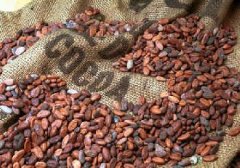Innovative baking technology in the 20th century: the baking method using purely hot air flow

Innovative baking technology in the 20th century: the baking method using purely hot air flow
Of course, how could there be no innovative baking technology in this era of the 20th century? In the middle of the twentieth century, there were two major milestones in the evolution from direct and indirect fire baking to hot air baking.
In 1934, Garbeth Burns developed a prototype bean roaster called Thermalo, which applied heat to the walls of the baking drum and had little effect on the roasting of coffee beans, but roared through the baking room with a strong heat as the main heating medium. This arrangement allows us to bake coffee beans at a lower air temperature, because fast-moving air can take away the gas produced when roasting coffee beans and improve the efficiency of heating coffee beans. Proponents of this innovative technology have a saying: "lower air temperatures and relatively fast-moving gases burn off less flavor oils, so coffee beans baked with this technology can have a better aroma performance."
In addition, in the 1930s, there was a bean roaster that completely abandoned the baking drum structure, but still retained a strong hot air flow while roasting and stirring coffee beans. This type of air flow bean roaster works very similar to today's hot air popcorn machine: hot air can also make coffee beans tumble and bake at the same time. The word "air flow" comes from the fact that when this kind of bean dryer works, coffee beans tumble in the baking room as if they were the same fluid. The baking principle of the air-flow bean roaster is similar to that of the Thermalo bean roaster in Gabes Burns: the accelerated hot air makes the baking temperature relatively low and can complete a batch of baking in a shorter time, which theoretically takes away less flavor oil.
In the United States today, the most widely used air-flow bean dryer is the one developed by Michael Sivetz, a technician and author who has a profound influence on the American coffee industry. The air-flow bean dryer developed by Mr. Siviz works by blowing upward with a strong hot air below, while coffee beans flow up the vertical baking chamber wall, and then fall like a waterfall. In this way, it is constantly cycled and stirred to achieve uniform baking. You can see a picture of one of the Siviz bean dryers and related instructions in the picture on page 55 of this book.
In the past 50 years, many other air-flow baking devices with different structural designs have been developed and gradually popularized on the market. some only make a small change in the patented design of 50 years ago (that is, blowing the hot air from the bottom of the baking chamber to the baking room, blowing the coffee beans up, and finally falling naturally along the wall of the baking chamber). Others, such as the rolling roaster (Roller Roaster) designed by Australian Ian Berstein and the System 90 centrifugal force packed bed roaster (System 90 Centrifugal,Packed-bed Roaster) from Garbeth Burns, are excellent baking collimation after thinking carefully about the concept of row baking. In addition, there are some machines that "show the air-flow baking process" as a gimmick, where you can see the coffee beans tumbling upward in the glass baking room, which can attract the attention of customers. let them be interested in understanding the relationship between baking technology and delicacy. These new small stores use air-flow baking machines to simplify the construction of bean roasters, and the operation process is mainly automated as far as possible.
Important Notice :
前街咖啡 FrontStreet Coffee has moved to new addredd:
FrontStreet Coffee Address: 315,Donghua East Road,GuangZhou
Tel:020 38364473
- Prev

Enjoy doing clumsy things: baking technology in the 19th century
Is it the change of science and technology, the change of society, or the change of society that promotes the change of science and technology? There is no clear answer to this question. But what we can be sure of is that the two have been moving forward at the same time, transforming coffee roasting in the 19th century from a large-scale, private form to a large-scale enterprise that uses advertising and mass marketing skills.
- Next

General knowledge of roasting of coffee beans electrothermal baking technology
Electricity was only used to drive the rollers of traditional drum dryers and blowers and cooling fans at the end of the 19th century, but it was not an effective source of heat for large-scale baking at that time. Any chef knows that the rate at which electricity is converted into heat is much lower than that at which gas is converted into heat; in addition, the price of gas is much cheaper than electricity. Just from here.
Related
- Beginners will see the "Coffee pull flower" guide!
- What is the difference between ice blog purified milk and ordinary milk coffee?
- Why is the Philippines the largest producer of crops in Liberia?
- For coffee extraction, should the fine powder be retained?
- How does extracted espresso fill pressed powder? How much strength does it take to press the powder?
- How to make jasmine cold extract coffee? Is the jasmine + latte good?
- Will this little toy really make the coffee taste better? How does Lily Drip affect coffee extraction?
- Will the action of slapping the filter cup also affect coffee extraction?
- What's the difference between powder-to-water ratio and powder-to-liquid ratio?
- What is the Ethiopian local species? What does it have to do with Heirloom native species?

